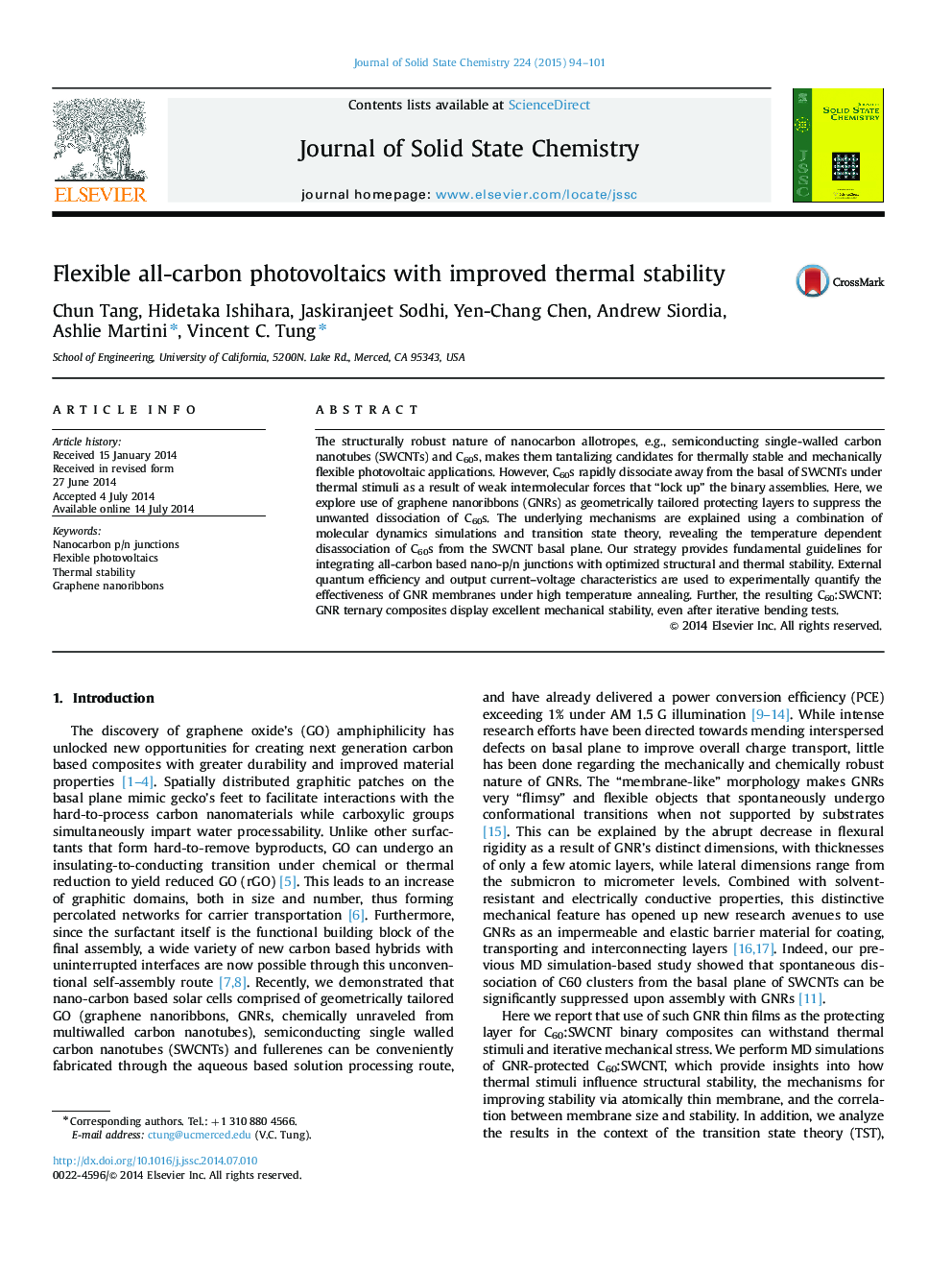| Article ID | Journal | Published Year | Pages | File Type |
|---|---|---|---|---|
| 1329809 | Journal of Solid State Chemistry | 2015 | 8 Pages |
The structurally robust nature of nanocarbon allotropes, e.g., semiconducting single-walled carbon nanotubes (SWCNTs) and C60s, makes them tantalizing candidates for thermally stable and mechanically flexible photovoltaic applications. However, C60s rapidly dissociate away from the basal of SWCNTs under thermal stimuli as a result of weak intermolecular forces that “lock up” the binary assemblies. Here, we explore use of graphene nanoribbons (GNRs) as geometrically tailored protecting layers to suppress the unwanted dissociation of C60s. The underlying mechanisms are explained using a combination of molecular dynamics simulations and transition state theory, revealing the temperature dependent disassociation of C60s from the SWCNT basal plane. Our strategy provides fundamental guidelines for integrating all-carbon based nano-p/n junctions with optimized structural and thermal stability. External quantum efficiency and output current–voltage characteristics are used to experimentally quantify the effectiveness of GNR membranes under high temperature annealing. Further, the resulting C60:SWCNT:GNR ternary composites display excellent mechanical stability, even after iterative bending tests.
Graphical abstractThe incorporation of solvent resistant, mechanically flexible and electrically addressable 2-D soft graphene nanoribbons facilitates the assembly of photoconductive carbon nano-p/n junctions for thermally stable and flexible photovoltaic cells.Figure optionsDownload full-size imageDownload as PowerPoint slide
